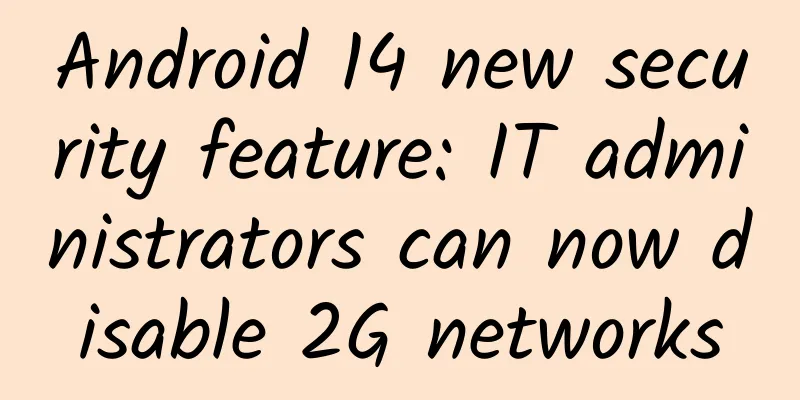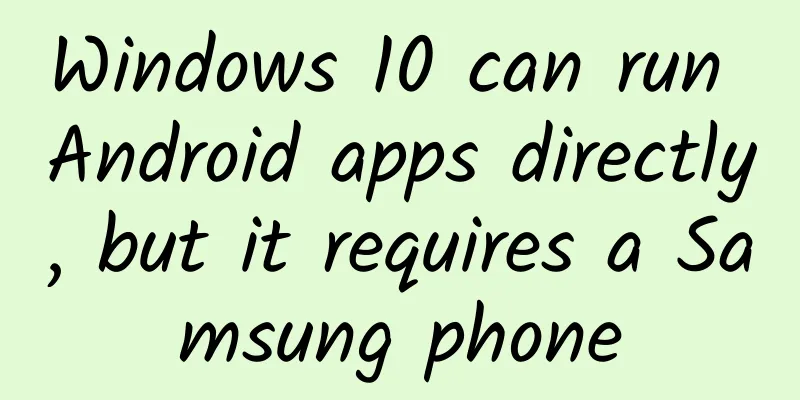Android 14 new security feature: IT administrators can now disable 2G networks

|
Google has introduced a new security feature in Android 14 that allows IT administrators to disable support for 2G cellular networks across their fleet of managed devices. The search giant said it is introducing a second user setting to turn off support for air-encrypted cellular connections at the model level. "The Android security model assumes that all networks are hostile to ensure that users are protected from network packet injection, tampering, or eavesdropping on user traffic," said Roger Piqueras Jover, Yomna Nasser, and Sudhi Herle. "Android does not rely on link-layer encryption to address this threat model. Instead, Android specifies that all network traffic should be end-to-end encrypted (E2EE)." 2G networks, in particular, have weak encryption and lack mutual authentication, making them vulnerable to over-the-air interception and traffic decryption attacks by impersonating real 2G towers. The threat posed by a malicious cell site means it could be exploited by malicious actors to intercept communication traffic, distribute malware, and launch Denial of Service (DoS) and Adversary in the Middle (AitM) attacks, causing surveillance issues. In June 2020, Amnesty International revealed how a Moroccan journalist was targeted in a cyber injection attack, likely using fake cell phone towers to spread the Pegasus spyware. Even worse, an adversary could potentially use advanced cell site simulators (aka Stingrays) to launch a stealthy downgrade attack that exploits the fact that all existing mobile devices still support 2G bands, forcing the phone to connect to a 2G network. To address some of these issues, Google added the option to disable 2G at the modem level in Android 12 in early 2022. As the next logical step, the company is now implementing a new restriction to block a device’s capabilities from downgrading to a 2G connection. The upcoming mobile OS also addresses the risk of null password (no encryption mode or GEA0) in commercial networks, which exposes user voice and SMS traffic, including one-time passwords (OTPs), to trivial network-in-flight interception attacks. The revelation comes as Google said it would enable E2EE for RCS conversations by default in the Messages app for Android for new and existing users, though the company noted that some users may be asked to agree to the terms of service provided by their carrier network. It also plans to add support for Message Layer Security (MLS) in the messaging app to enable interoperability with other messaging services. Despite Google's attempts to publicly pressure Apple to adopt RCS, the iPhone maker appears content with iMessage encrypted messaging. It also has expressed no interest in releasing a version of iMessage for Android, forcing users who text between the two operating systems to switch to third-party messaging alternatives. |
<<: Apple releases iOS / iPadOS 17 third public beta
>>: iOS 17 Beta 5 updated with multiple changes!
Recommend
Mobile phones are getting more and more expensive, but why are fewer and fewer people putting screen protectors on their phones?
Nowadays, mobile phones are getting more and more...
APP activity promotion and operation: Create these 3 emotions to warm up the activity
"Wolf Warrior 2" grossed over 1 billion...
Tutorial on the art of fasting and health preservation (video + audio + handouts 35G collection)
The Bigu Fasting and Health Preservation course i...
Traffic monetization: How do mobile apps design advertising space?
This article mainly talks to you about how to des...
Feihua Health Network is recruiting SEO, with a monthly salary of 20,000 to 35,000
You must have successful work experience and info...
Collection of Double Ninth Festival poster copywriting!
After the Mid-Autumn Festival and National Day, w...
How to write a 99-point event promotion plan?
If you give a campaign plan 100 points, then toda...
If you do insurance marketing like this, closing deals will no longer be difficult!
When selling insurance, we always encounter vario...
The logic and method of operating a Zhihu account at zero cost
Zhihu started operating in September 2019, and it...
How did the first generation of Chinese mobile phone manufacturers experience the SARS epidemic?
Everyone has seen the impact of the novel coronav...
Gradle for Android Part 1 (Starting with Gradle and AS)
As you can see, this is an English book. Since th...
A Japanese mask costs 300 yuan. Why is the mask so expensive?
According to media reports, there has been a huge...
Three ways for e-commerce operations to promote user activity!
As an e-commerce operator, you often have to ment...
Wuchuan SEO Training: These methods may lead to excessive website SEO optimization, are you still using them?
Are there still many people using excessive websi...
How to operate a (product) APP?
This article is a summary of novice operations . ...









